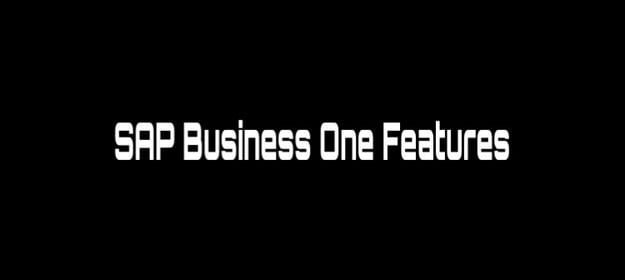Topics: Advanced Planning and Scheduling, Implementation, APS, ERP, APS, SAP, Microsoft Dynamics AX, Business One
According to SAP Business One, 50,000 small and midsize companies in 150 countries are using the software suite to automate a variety of business functions. The affordable tool helps small to midsize companies manage accounting, CRM, HR, purchasing, supply chain functions, and much more.
 SAP recognized an industry need and purchased the mid-market software in 2002 and rebranded it as Business One. Today, the business management software is streamlining key processes for businesses with close to one hundred employees and around $75 million in annual revenue.
SAP recognized an industry need and purchased the mid-market software in 2002 and rebranded it as Business One. Today, the business management software is streamlining key processes for businesses with close to one hundred employees and around $75 million in annual revenue.
Reviews of the product are generally positive: most say it is easy to deploy and ongoing management requires only a short learning curve. Additionally, it is much cheaper to implement than the larger SAP ERP software, making it quite suitable for small or midsize companies. For companies that need more than an accounting-only solution, SAP Business One helps streamline auxiliary business processes. For example, it can track customer-related information in an effort to provide better service.
When a business experiences growth, the software grows with it. SAP Business One offers multi-location set-up with access to one centralized server. One drawback for manufacturing, however, is that the platform cannot break down an item into components or across multiple departments and therefore may not be appropriate for firms with robust manufacturing or warehousing needs.
The software's strength is its ability to collect disparate operational data in one location so that the "big picture" can always remain in sight throughout the decision-making process. In fact, this data-display solution is often described as flexible and customizable. For example, user-friendly dashboards and reports provide essential business insights so that project management can consistently analyze the success of projects.

Additionally, SAP Business One offers 14 functional modules to handle common business tasks like financials, sales, purchasing, and more. Although each module deals with a specific function, they all share a common database so that each module is linked where applicable. Businesses can even extend the software's functionality with more than 450 third-party applications available.
The product architecture is a typical client-server model. More specifically, the client software is a Microsoft Windows-based product connected to a back-end server. Supported operating systems include: Windows (7, Vista, XP), Mac OS, and Linux. Apart from direct system access, SAP Business One is incorporating new market demands- one of which is increased mobility. The platform offers mobility (on iOS and Android operating systems) so businesses can access their company data regardless of location or time.
Seamless access to master data is imperative to business growth. That is why in 2015, the 9.2 software release added project management capabilities and this year, the 9.3 release included project access via web browsers.
ERP software is not just for big businesses anymore. SAP Business One is one of the most affordable entry-level ERP options. It can satisfy businesses that are looking to leverage complex functionalities and integrations aligned with their long term growth initiatives.
Topics: Advanced Planning and Scheduling, Implementation, APS, ERP, APS, SAP, Microsoft Dynamics AX, Business One
0 Comments
No video selected
Select a video type in the sidebar.







LEAVE A COMMENT